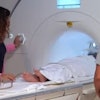
Co-developer Tomi Nano, a doctoral candidate at Western University in London, Ontario, will present details of the apodized-aperture pixel (AAP) x-ray detector technology, which uses microelements (0.01-0.025 mm) to reproduce and refine current clinical pixel sizes (0.07-0.2 mm) for better images.
One way to evaluate x-ray detector performance is through detective quantum efficiency (DQE), which essentially measures signal-to-noise ratio at a given level of radiation. Current clinical detectors have a low DQE of less than 30% at high frequencies, which are required for detecting small image features. Another key performance indicator is modulation transfer function, which assesses the image contrast of an imaging system or a component at a given spatial frequency. With the AAP design, the researchers are looking to achieve high DQE at high frequencies and optimum modulation transfer function.
In simulation tests, the AAP x-ray detector achieved 1.5 times greater modulation transfer function at high frequencies than conventional x-ray detector design. For cases in which detector DQE was affected by converter blur, x-ray reabsorption, or element size, the AAP x-ray detector high-frequency DQE was 1.5 to 2.5 times greater than that of conventional detector design.
The bottom line thus far is that the AAP design enhanced both DQE and modulation transfer function. As for clinical benefits, Nano and co-developer Ian Cunningham, PhD, founder of DQE Instruments, speculated that these attributes might help increase cancer detection rates.
This paper received a Roadie 2018 award for the most popular abstract by page views in this Road to RSNA section.



















